Abstract
1. The effects of artificial swim training on maximal oxygen consumption and heart rate, as well as on the capillarity and oxidative capacity of locomotory muscles, have been studied in the tufted duck, Aythya fuligula. 2. The artificial training programme resulted in a 27% increase in maximal oxygen consumption, mainly as a result of an increase in muscle capillarity (20% increase in capillary/fibre ratio). In addition, activity of an oxidative enzyme, citrate synthase, increased (by 42%) and there was a significant transformation of fibre types in the lateral gastrocnemius muscle. 3. Altering the duration and nature of the training stimulus, for example flying and diving, can bring about different degrees of muscular adaptation, particularly in oxidative capacity.
Full text
PDF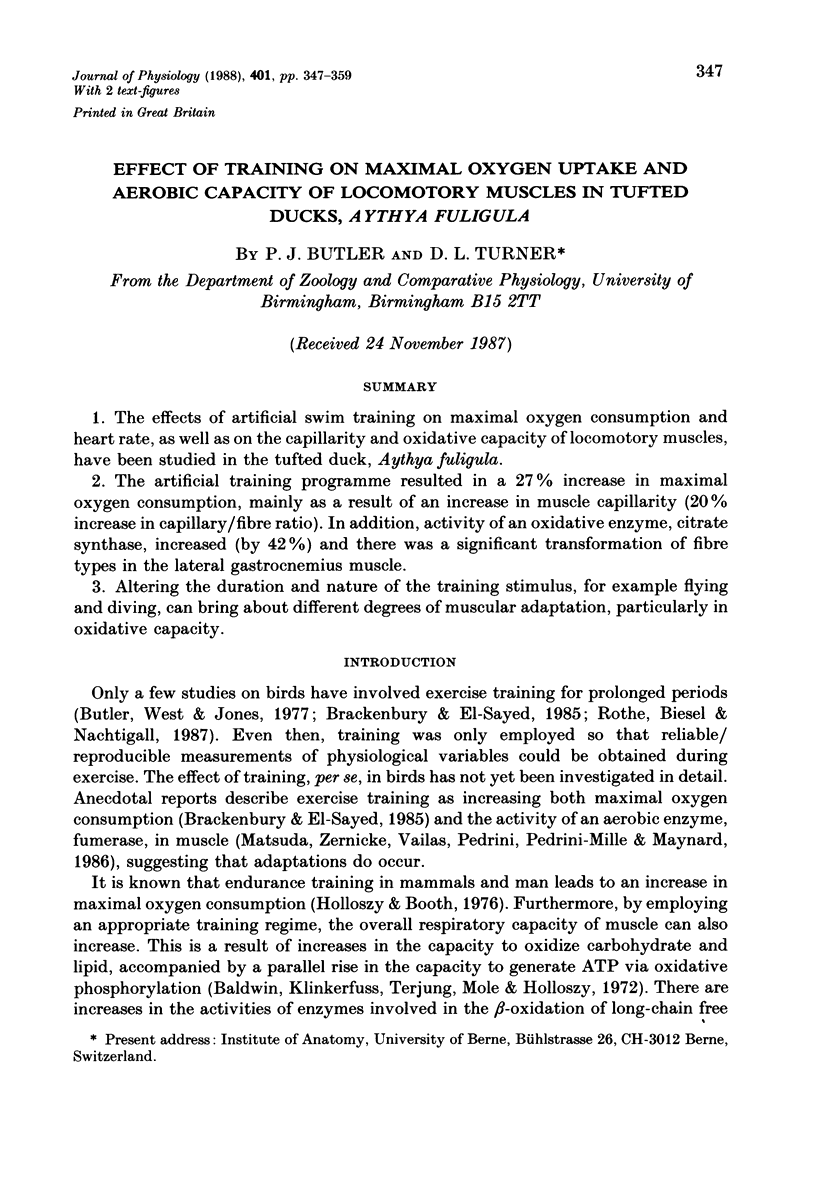
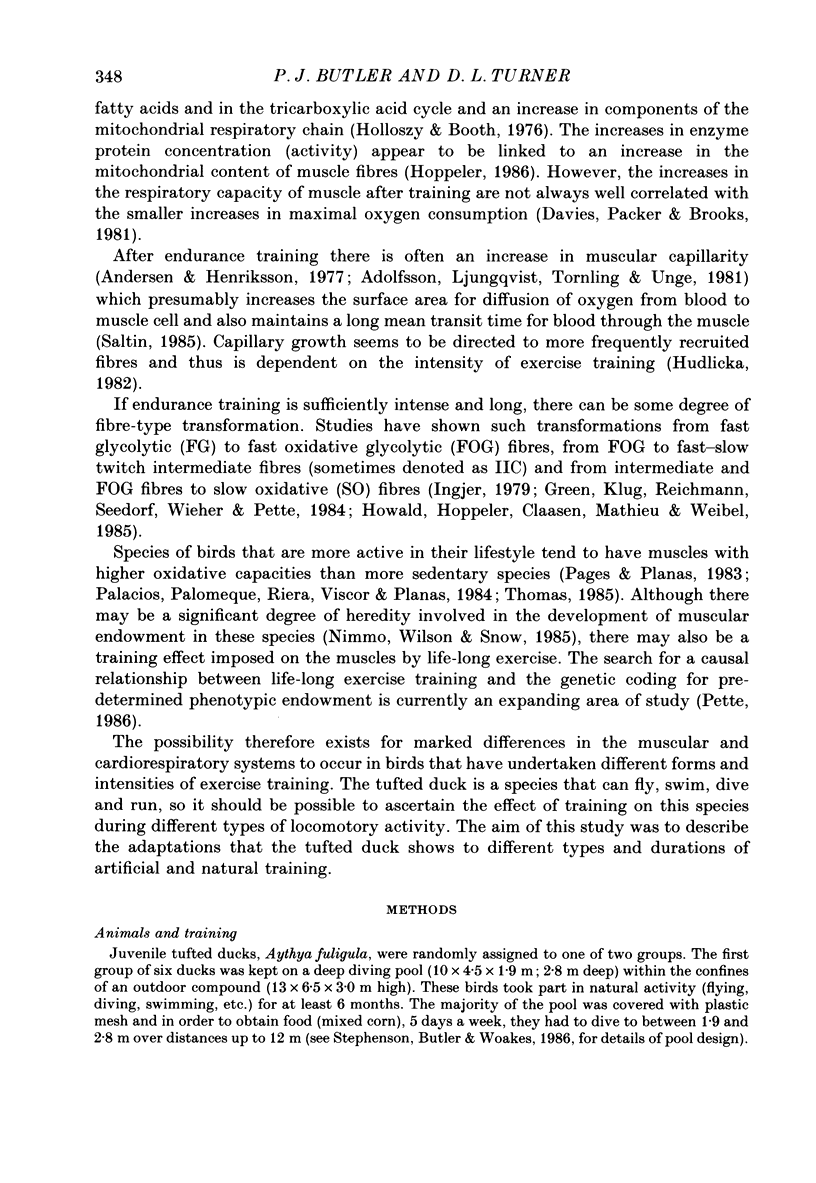
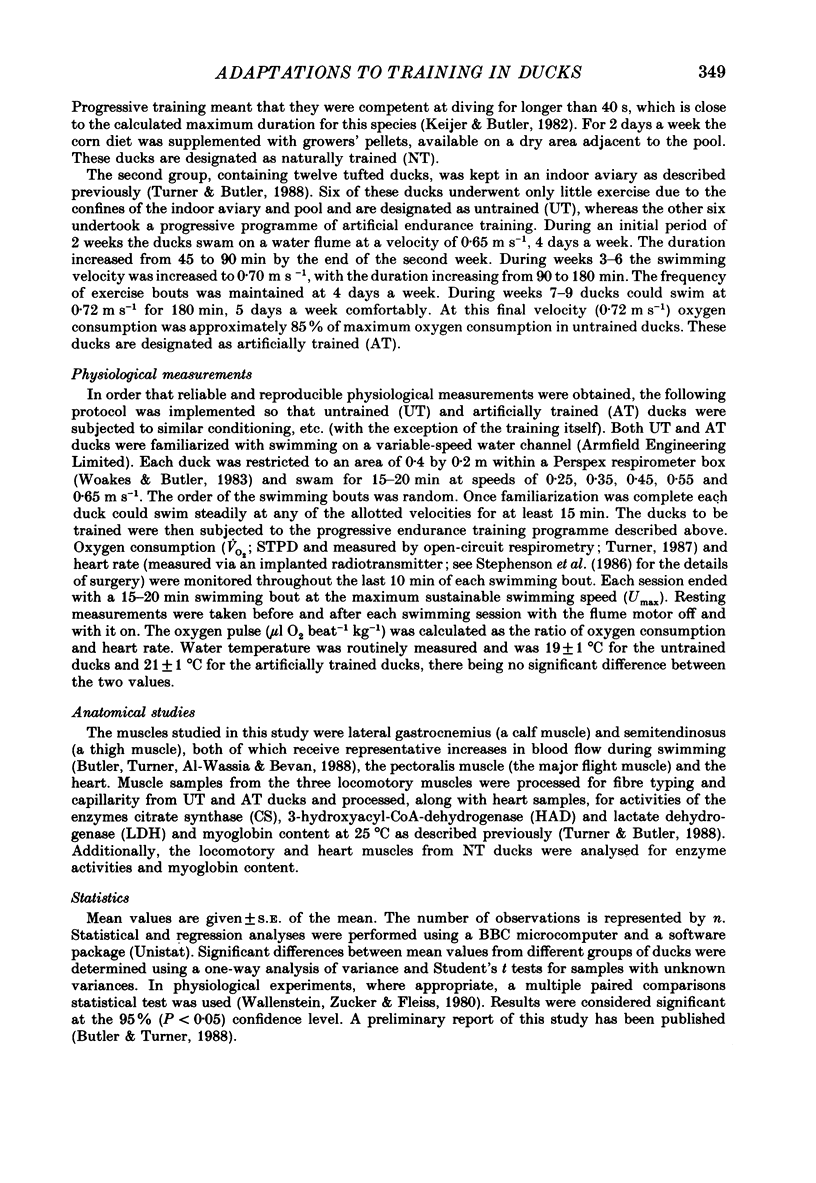
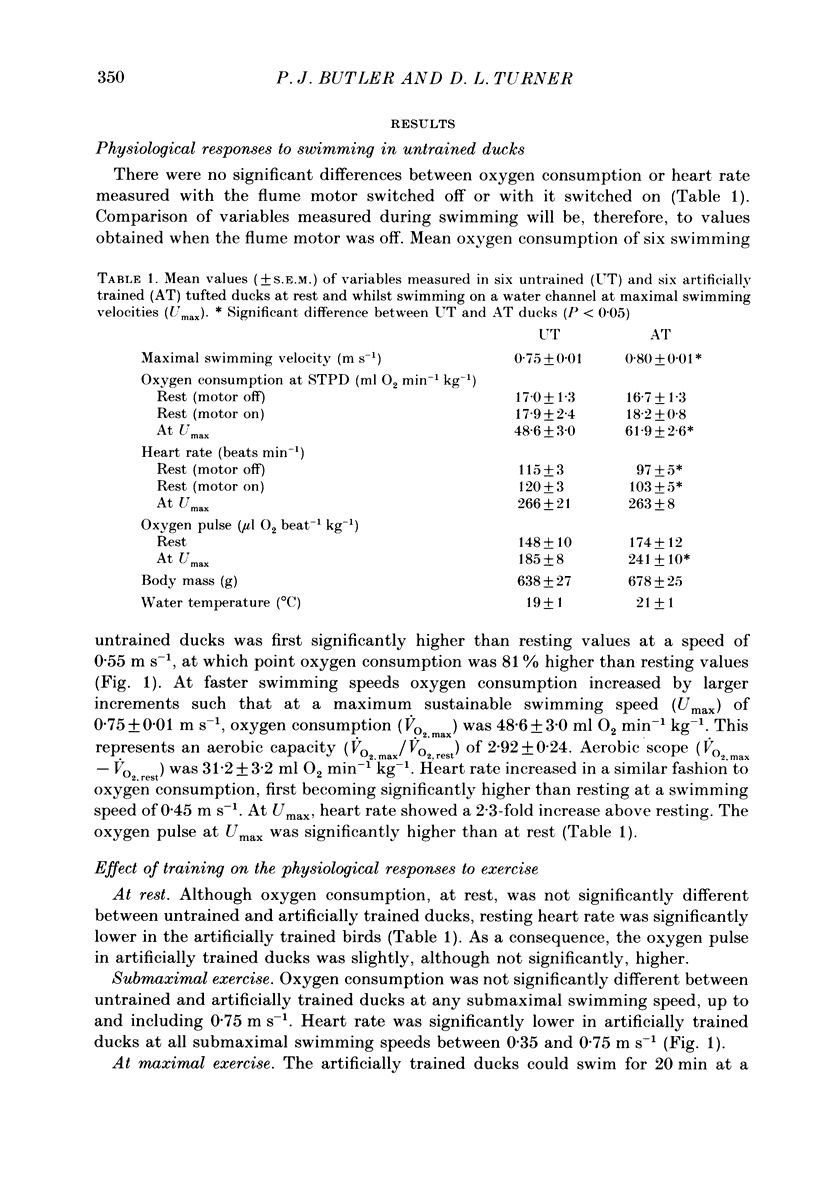
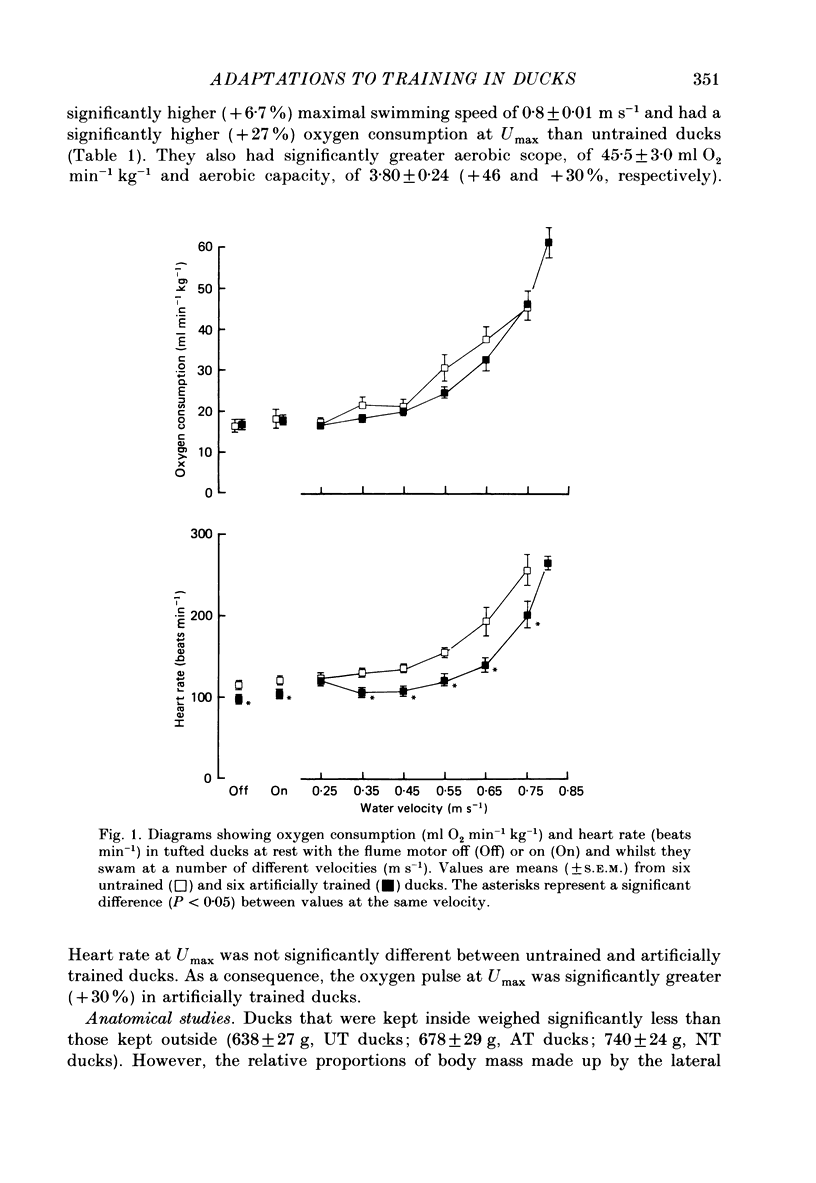

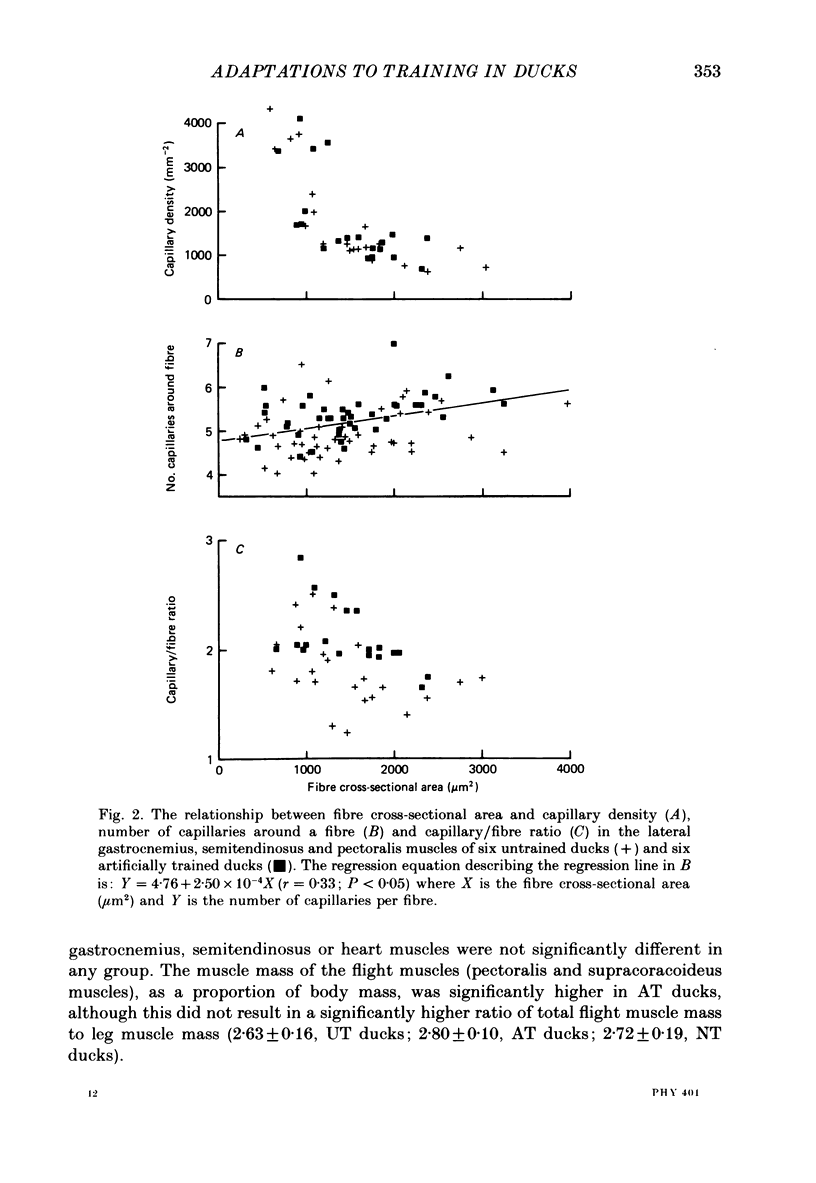
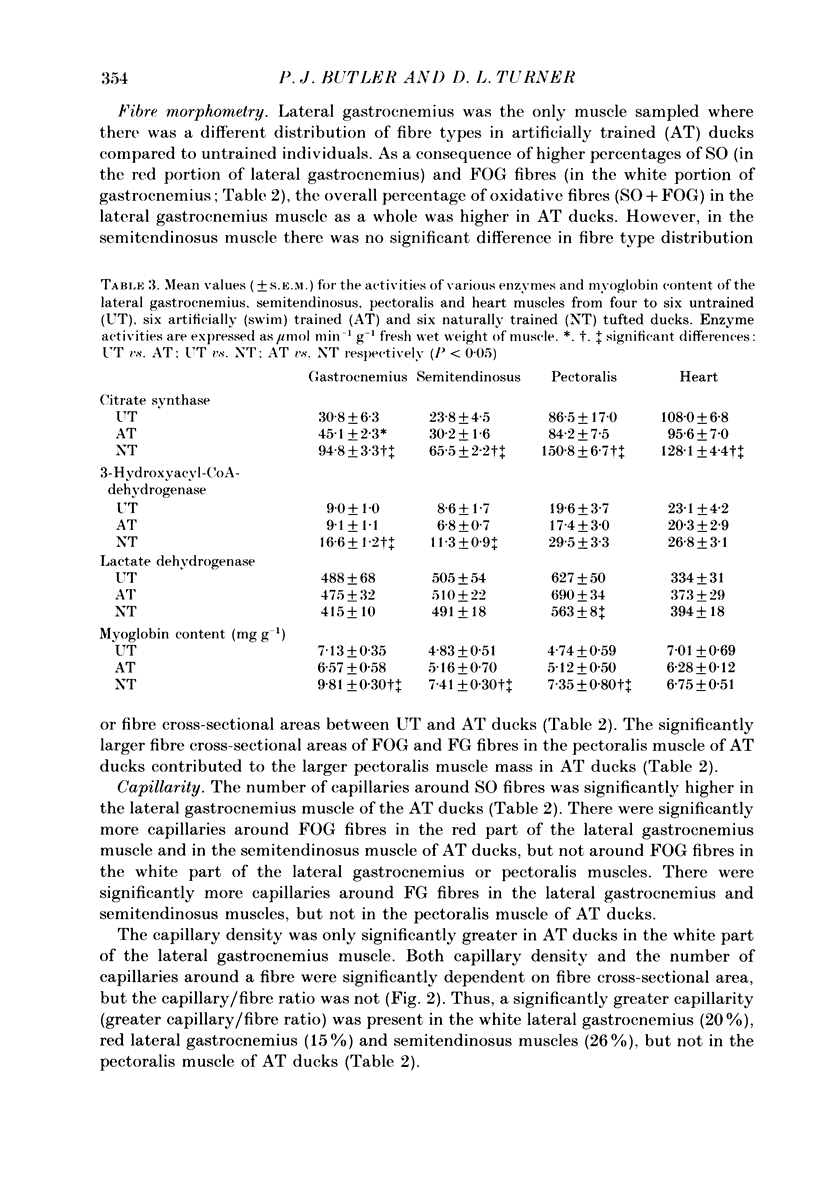
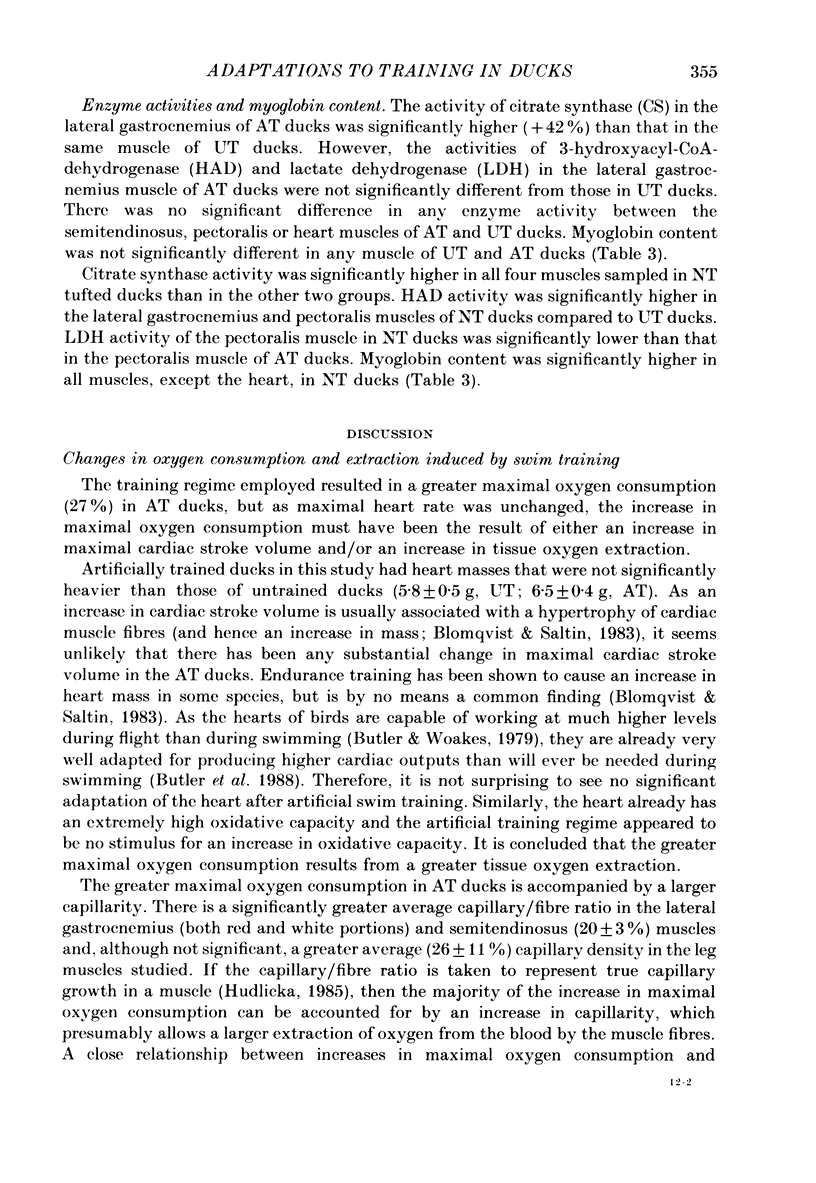
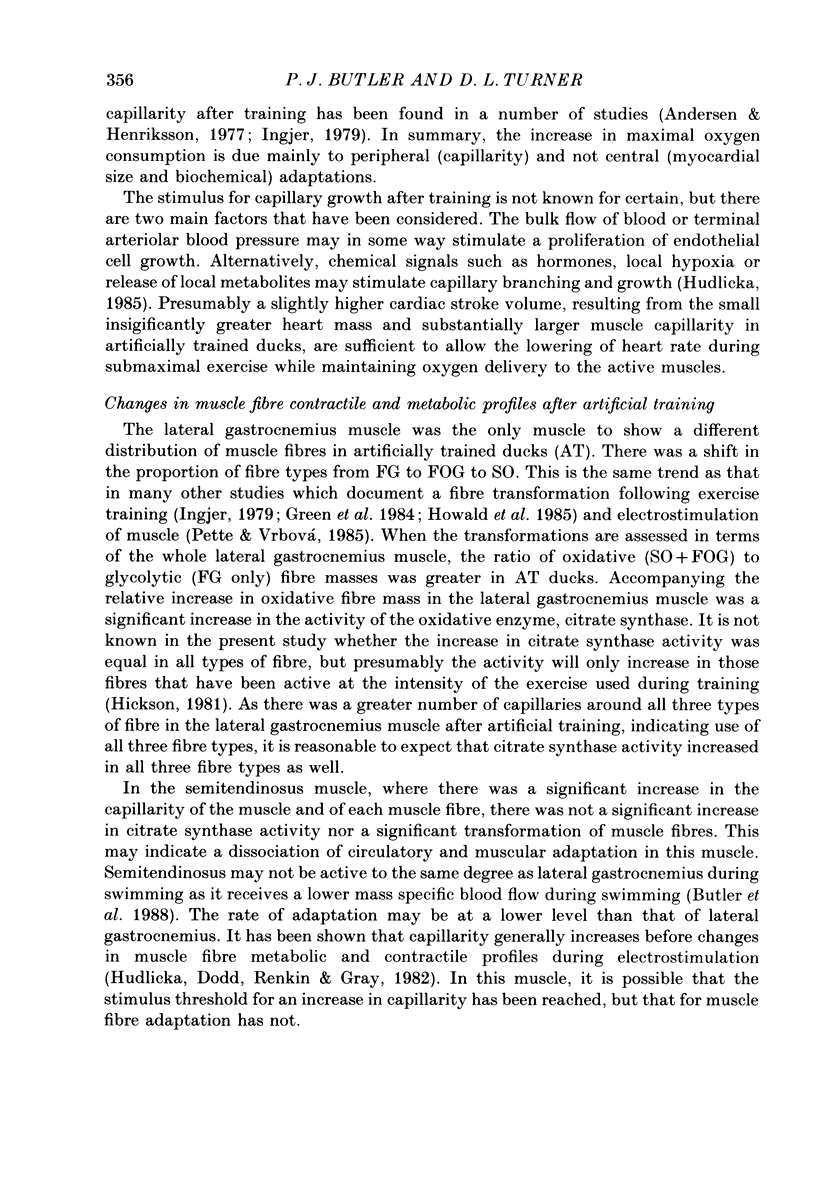
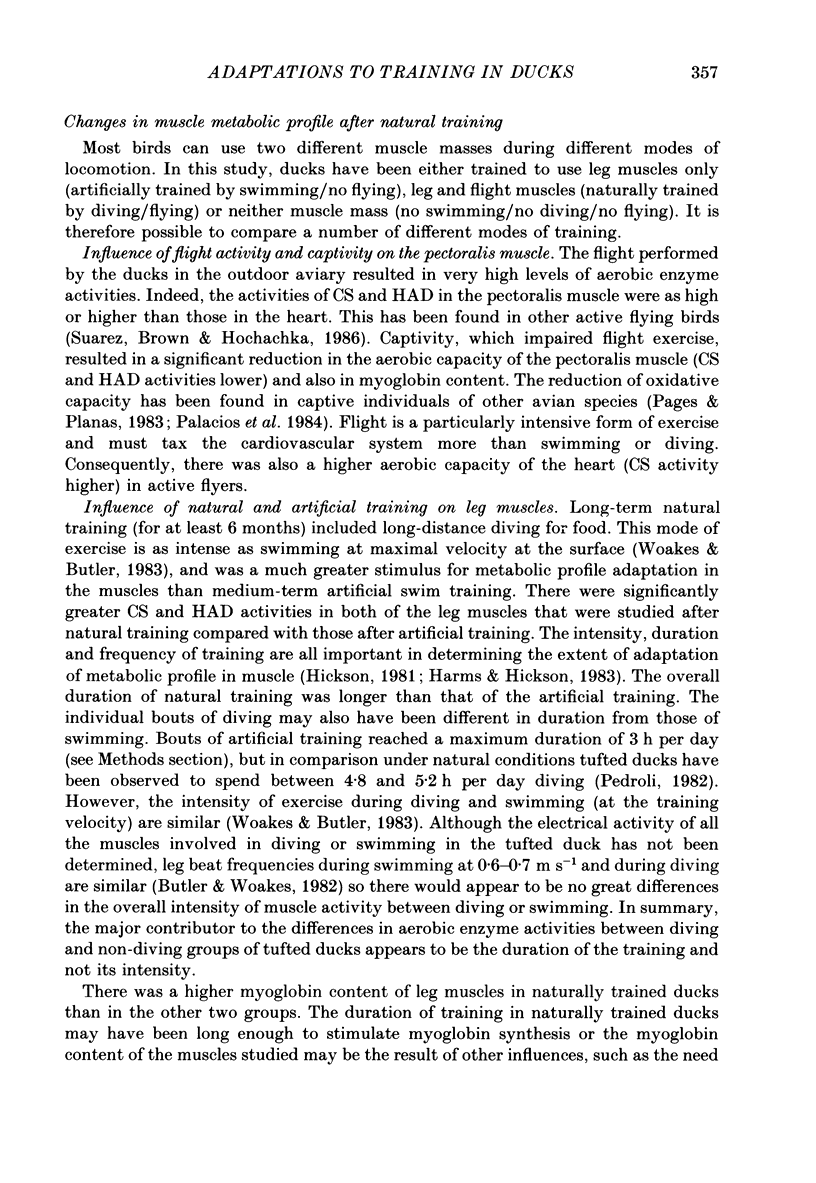
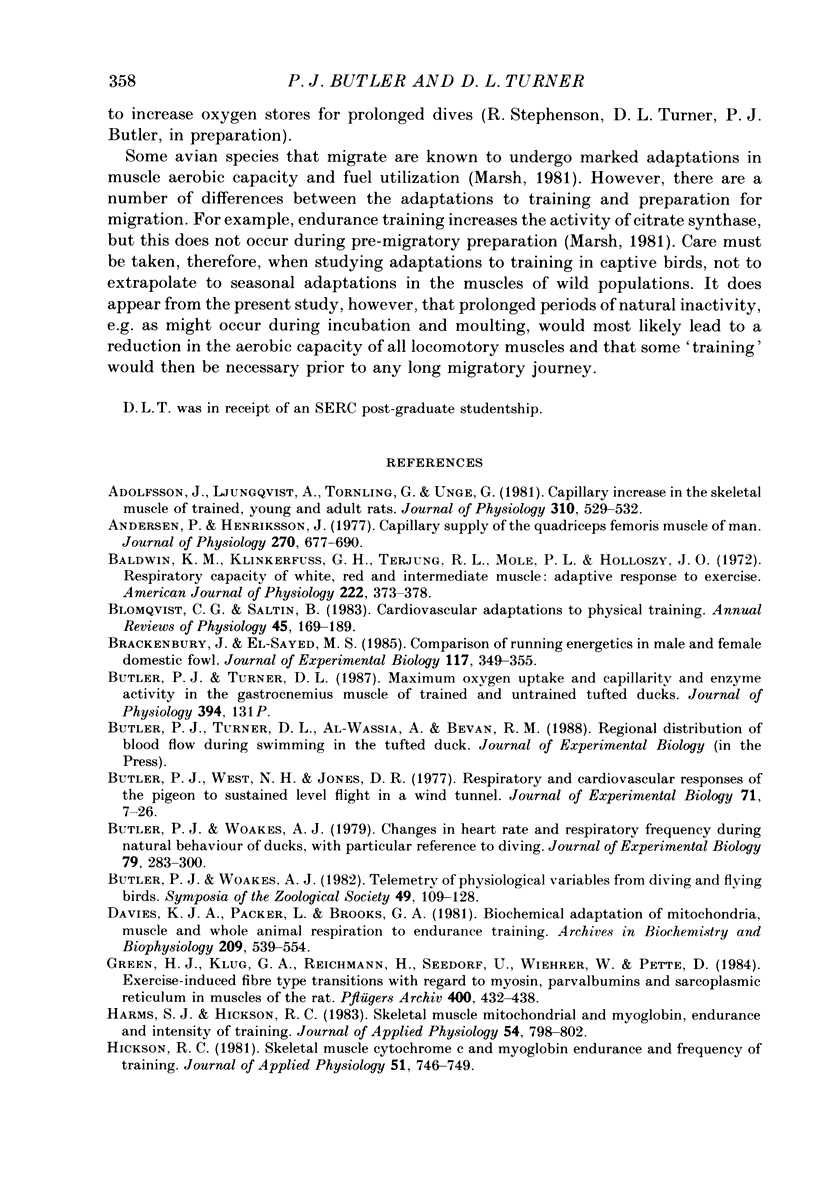
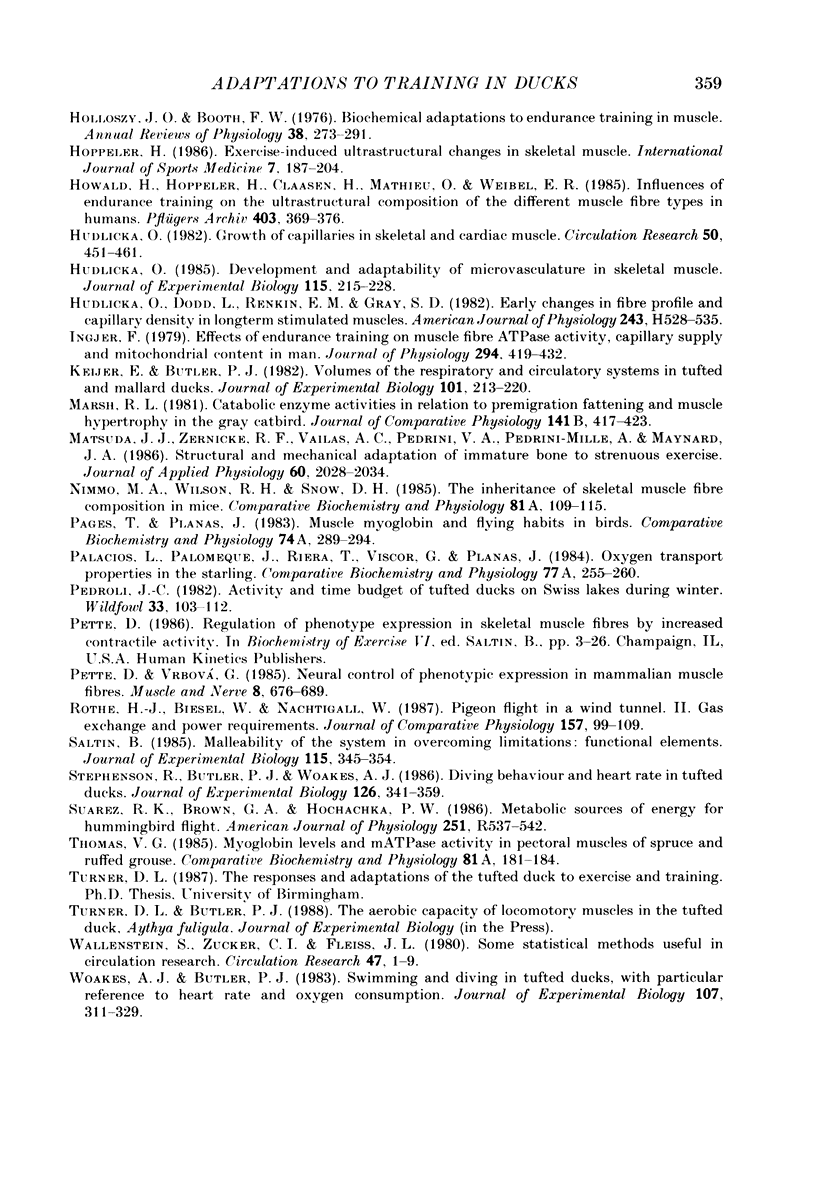
Selected References
These references are in PubMed. This may not be the complete list of references from this article.
- Adolfsson J., Ljungqvist A., Tornling G., Unge G. Capillary increase in the skeletal muscle of trained young and adult rats. J Physiol. 1981 Jan;310:529–532. doi: 10.1113/jphysiol.1981.sp013565. [DOI] [PMC free article] [PubMed] [Google Scholar]
- Andersen P., Henriksson J. Capillary supply of the quadriceps femoris muscle of man: adaptive response to exercise. J Physiol. 1977 Sep;270(3):677–690. doi: 10.1113/jphysiol.1977.sp011975. [DOI] [PMC free article] [PubMed] [Google Scholar]
- Baldwin K. M., Klinkerfuss G. H., Terjung R. L., Molé P. A., Holloszy J. O. Respiratory capacity of white, red, and intermediate muscle: adaptative response to exercise. Am J Physiol. 1972 Feb;222(2):373–378. doi: 10.1152/ajplegacy.1972.222.2.373. [DOI] [PubMed] [Google Scholar]
- Blomqvist C. G., Saltin B. Cardiovascular adaptations to physical training. Annu Rev Physiol. 1983;45:169–189. doi: 10.1146/annurev.ph.45.030183.001125. [DOI] [PubMed] [Google Scholar]
- Brackenbury J. H., el-Sayed M. S. Comparison of running energetics in male and female domestic fowl. J Exp Biol. 1985 Jul;117:349–355. doi: 10.1242/jeb.117.1.349. [DOI] [PubMed] [Google Scholar]
- Davies K. J., Packer L., Brooks G. A. Biochemical adaptation of mitochondria, muscle, and whole-animal respiration to endurance training. Arch Biochem Biophys. 1981 Jul;209(2):539–554. doi: 10.1016/0003-9861(81)90312-x. [DOI] [PubMed] [Google Scholar]
- Green H. J., Klug G. A., Reichmann H., Seedorf U., Wiehrer W., Pette D. Exercise-induced fibre type transitions with regard to myosin, parvalbumin, and sarcoplasmic reticulum in muscles of the rat. Pflugers Arch. 1984 Apr;400(4):432–438. doi: 10.1007/BF00587545. [DOI] [PubMed] [Google Scholar]
- Harms S. J., Hickson R. C. Skeletal muscle mitochondria and myoglobin, endurance, and intensity of training. J Appl Physiol Respir Environ Exerc Physiol. 1983 Mar;54(3):798–802. doi: 10.1152/jappl.1983.54.3.798. [DOI] [PubMed] [Google Scholar]
- Hickson R. C. Skeletal muscle cytochrome c and myoglobin, endurance, and frequency of training. J Appl Physiol Respir Environ Exerc Physiol. 1981 Sep;51(3):746–749. doi: 10.1152/jappl.1981.51.3.746. [DOI] [PubMed] [Google Scholar]
- Holloszy J. O., Booth F. W. Biochemical adaptations to endurance exercise in muscle. Annu Rev Physiol. 1976;38:273–291. doi: 10.1146/annurev.ph.38.030176.001421. [DOI] [PubMed] [Google Scholar]
- Hoppeler H. Exercise-induced ultrastructural changes in skeletal muscle. Int J Sports Med. 1986 Aug;7(4):187–204. doi: 10.1055/s-2008-1025758. [DOI] [PubMed] [Google Scholar]
- Howald H., Hoppeler H., Claassen H., Mathieu O., Straub R. Influences of endurance training on the ultrastructural composition of the different muscle fiber types in humans. Pflugers Arch. 1985 Apr;403(4):369–376. doi: 10.1007/BF00589248. [DOI] [PubMed] [Google Scholar]
- Hudlická O. Development and adaptability of microvasculature in skeletal muscle. J Exp Biol. 1985 Mar;115:215–228. doi: 10.1242/jeb.115.1.215. [DOI] [PubMed] [Google Scholar]
- Hudlická O., Dodd L., Renkin E. M., Gray S. D. Early changes in fiber profile and capillary density in long-term stimulated muscles. Am J Physiol. 1982 Oct;243(4):H528–H535. doi: 10.1152/ajpheart.1982.243.4.H528. [DOI] [PubMed] [Google Scholar]
- Matsuda J. J., Zernicke R. F., Vailas A. C., Pedrini V. A., Pedrini-Mille A., Maynard J. A. Structural and mechanical adaptation of immature bone to strenuous exercise. J Appl Physiol (1985) 1986 Jun;60(6):2028–2034. doi: 10.1152/jappl.1986.60.6.2028. [DOI] [PubMed] [Google Scholar]
- Nimmo M. A., Wilson R. H., Snow D. H. The inheritance of skeletal muscle fibre composition in mice. Comp Biochem Physiol A Comp Physiol. 1985;81(1):109–115. doi: 10.1016/0300-9629(85)90275-0. [DOI] [PubMed] [Google Scholar]
- Pette D., Vrbová G. Neural control of phenotypic expression in mammalian muscle fibers. Muscle Nerve. 1985 Oct;8(8):676–689. doi: 10.1002/mus.880080810. [DOI] [PubMed] [Google Scholar]
- Saltin B. Malleability of the system in overcoming limitations: functional elements. J Exp Biol. 1985 Mar;115:345–354. doi: 10.1242/jeb.115.1.345. [DOI] [PubMed] [Google Scholar]
- Stephenson R., Butler P. J., Woakes A. J. Diving behaviour and heart rate in tufted ducks (Aythya fuligula). J Exp Biol. 1986 Nov;126:341–359. doi: 10.1242/jeb.126.1.341. [DOI] [PubMed] [Google Scholar]
- Suarez R. K., Brown G. S., Hochachka P. W. Metabolic sources of energy for hummingbird flight. Am J Physiol. 1986 Sep;251(3 Pt 2):R537–R542. doi: 10.1152/ajpregu.1986.251.3.R537. [DOI] [PubMed] [Google Scholar]
- Wallenstein S., Zucker C. L., Fleiss J. L. Some statistical methods useful in circulation research. Circ Res. 1980 Jul;47(1):1–9. doi: 10.1161/01.res.47.1.1. [DOI] [PubMed] [Google Scholar]


